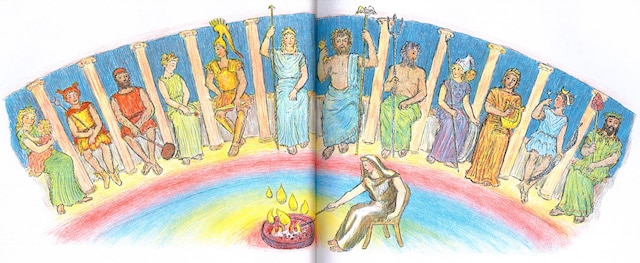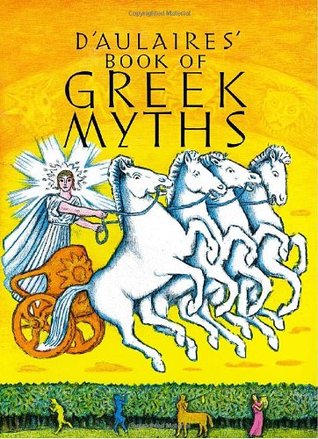
Writing in centuries past, many scientists felt compelled to wax poetic about cosmic mysteries and God’s handiwork. Perhaps one should not be surprised at this: most scientists back then, as well as many scientists today, identify themselves as spiritually devout.
But a careful reading of older texts, particularly those concerned with the universe itself, shows that the authors invoke divinity only when they reach the boundaries of their understanding. They appeal to a higher power only when staring into the ocean of their own ignorance…
Earlier this week, CNBC Fast Money hosted a former trader who came on to discuss the Plunge Protection Team urban legend as a bonafide explanation for why the market has been acting the way it has.
Leaving aside the fact that, three years ago, I had already explained this phenomenon of short and sharp corrections followed by new highs as a function of the business model shift within the wealth management industry, the former trader was very short on specifics or data or logic of any kind.
The video is below, but you can watch it later, it’s just a rehash of the old story about how a “Working Committee on Markets” had been established under President Reagan to prevent the stock market from going down ever again, and the “team” is made up of various people at the SEC, the NYSE etc.
Is the plunge protection at work? Legendary investor @AsherEdelman lays out the conspiracy pic.twitter.com/A3h7QyV1EC
— CNBC’s Fast Money (@CNBCFastMoney) May 23, 2017
Now obviously, the existence of a Plunge Protection Team (or PPT), is demonstrably ridiculous. Especially when you consider the fact that we’ve seen the market cut in half twice during the last 17 years, with dozens of instances of 10 and 15 percent corrections all along the way over the last 29 years since the end of Reagan’s term. The idea that there could be some clandestine, bipartisan shadow organization, with enough money to prop up a global stock market, and the solemnity required to faithfully do so across a half-dozen Presidential administrations and all manner of Congressional configurations, is akin to believing in the Area 51 myths or the moon landing hoax.
The clip has gotten a lot of attention – thankfully, mostly derisive and mocking attention – because we live in an age in which the American people seem to no longer be able to separate facts and truths from lies and conspiracy theories. Or, worse than not being able to, they no longer care to distinguish between real and fake – they’d prefer to simply adopt the version of something that suits their previously held suspicions or biases.
If you’re someone selling an alternative to stock market exposure, or a vehicle that actively bets against the market, then it better suits your business (and psyche) to have a narrative in which you are not wrong, but your upside potential has been manipulated away by unseen and unfair forces. “I wouldn’t be so paranoid, if only they weren’t all out to get me!”
This applies to so many people and product purveyors these days that I simply wouldn’t have the time or the space here to list them all. Suffice it to say that you know them when you see them.
The market has been gaining for almost 8 years now, leaving many investment professionals in the dust. As a survival mechanism, it’s only natural to see them repeating increasingly absurd stories about why it wasn’t their fault. We’re talking about ego and human nature and salesmanship, a whole host of other psychological issues that play into the current paradigm.
But this doesn’t explain why there seems to be such a willingness on the part of civilians to even entertain these types of conspiracies and stories.
To which I’ll point to a legendary essay that astrophysicist, author, and science communicator Neil DeGrasse Tyson wrote for Natural History magazine 12 years ago. The essay, The Perimeter of Ignorance, which lives on at the Hayden Planetarium’s website to this day, has accrued a sort of canonical status around it over the years since it was written. Tyson shows why history’s greatest scientists had often defaulted to talking about a great and powerful almighty creator whenever they ran into a question of celestial studies or the physical world that defied explanation, given our understanding at the time in which they lived…
Newton’s law of gravity enables you to calculate the force of attraction between any two objects. If you introduce a third object, then each one attracts the other two, and the orbits they trace become much harder to compute. Add another object, and another, and another, and soon you have the planets in our solar system. Earth and the Sun pull on each other, but Jupiter also pulls on Earth, Saturn pulls on Earth, Mars pulls on Earth, Jupiter pulls on Saturn, Saturn pulls on Mars, and on and on.
Newton feared that all this pulling would render the orbits in the solar system unstable. His equations indicated that the planets should long ago have either fallen into the Sun or flown the coop—leaving the Sun, in either case, devoid of planets. Yet the solar system, as well as the larger cosmos, appeared to be the very model of order and durability. So Newton, in his greatest work, the Principia, concludes that God must occasionally step in and make things right…
And this had to suffice for awhile. Until…
A century later, the French astronomer and mathematician Pierre-Simon de Laplace confronted Newton’s dilemma of unstable orbits head-on. Rather than view the mysterious stability of the solar system as the unknowable work of God, Laplace declared it a scientific challenge. In his multipart masterpiece, Mécanique Céleste, the first volume of which appeared in 1798, Laplace demonstrates that the solar system is stable over periods of time longer than Newton could predict. To do so, Laplace pioneered a new kind of mathematics called perturbation theory, which enabled him to examine the cumulative effects of many small forces. According to an oft-repeated but probably embellished account, when Laplace gave a copy of Mécanique Céleste to his physics-literate friend Napoleon Bonaparte, Napoleon asked him what role God played in the construction and regulation of the heavens.
Sire,Laplace replied,I have no need of that hypothesis.
Laplace comes along and is able to fill some of the gaps that Newton struggled with a hundred years earlier. Many scientists have come in since then and filled still more gaps. This is how it works. How we get smarter and become more aware of the ways in which the world around us operates. And the more knowledge we gain, the more we can build upon to reach the next rung in the ladder of wisdom, and then the next.
But until we climb higher, we have these gaps and they need to be filled by something. Some people are happy to just think of them as mysteries we haven’t solved yet while others create myths that offer easier answers. “Today secular philosophers call that kind of divine invocation God of the gaps
—which comes in handy, because there has never been a shortage of gaps in people’s knowledge.”
The Plunge Protection Team is a sort of “God of the Gaps.” The repetition of the PPT folklore serves the purpose of giving an easy, interesting and sexy explanation for those who require one. It can also take on the sort of darker connotation needed for those who would use it to more nefarious ends, like the selling of investment products and services that are either expensive or shady (or both).
***
You’ve probably seen this book before, it’s an all-time bestseller:

I read it to my daughter as her bedtime stories a few years back, before her face was glued to her iPhone screen. My father read these stories to me, from the same exact book. It even had the same cover.
As we made the transition from Hera to Hermes, my kid asked me where these stories originally came from, “who wrote them?”
I explained that they came about because people needed answers to why things were the way they were, and there weren’t any scientists yet. So these stories were explanations.
“Why does the sun travel from east to west each day?” Because Helios, the son of Apollo, rides his route across the sky in a flaming chariot.
“Why do we hear thunder and see lightning?” That’s mighty Zeus, and someone has made him very angry.
“Why does the peacock appear to have a tail covered in eyes?” That’s Argos, who was once covered in eyes so as to serve as a scout for the gods, but he was transformed into a bird as a punishment…
“Where does fire come from?” “Why is the ground rumbling?” “Who commands the waves in the sea?” “Why are there seasons?”
Gods of the Gaps arise to answer.
“Why does the market seem to get bought up so quickly after a sell-off?” “Why isn’t there more volatility?”
More gaps, and, like clockwork, more gods invented to address them.
Markets don’t always have answers, though we try to find them anyway because it is in our nature to do so.
And thankfully this is the case – it is this striving for answers that is at the root of all the greatness and progress of civilization over the centuries – even if our original explanations for things look foolish in hindsight. We probably needed to have started with leeches and phrenology before we got to genomes and oncology.
I’ll let Neil have the final word here:
As long as the celestial sphere was generally regarded as the domain of the divine, the fact that mere mortals could not explain its workings could safely be cited as proof of the higher wisdom and power of God. But beginning in the sixteenth century, the work of Copernicus, Kepler, Galileo, and Newton—not to mention Maxwell, Heisenberg, Einstein, and everybody else who discovered fundamental laws of physics—provided rational explanations for an increasing range of phenomena. Little by little, the universe was subjected to the methods and tools of science, and became a demonstrably knowable place.




[…] PPT and the “God of the Gaps” – The Reformed Broker […]
[…] By Josh Brown […]
… [Trackback]
[…] Read More here on that Topic: thereformedbroker.com/2017/05/25/ppt-and-the-god-of-the-gaps/ […]
… [Trackback]
[…] There you can find 54250 more Info to that Topic: thereformedbroker.com/2017/05/25/ppt-and-the-god-of-the-gaps/ […]
… [Trackback]
[…] Find More on to that Topic: thereformedbroker.com/2017/05/25/ppt-and-the-god-of-the-gaps/ […]
… [Trackback]
[…] Information to that Topic: thereformedbroker.com/2017/05/25/ppt-and-the-god-of-the-gaps/ […]
… [Trackback]
[…] There you can find 26756 additional Info on that Topic: thereformedbroker.com/2017/05/25/ppt-and-the-god-of-the-gaps/ […]
… [Trackback]
[…] Read More Info here on that Topic: thereformedbroker.com/2017/05/25/ppt-and-the-god-of-the-gaps/ […]
… [Trackback]
[…] Find More here on that Topic: thereformedbroker.com/2017/05/25/ppt-and-the-god-of-the-gaps/ […]
… [Trackback]
[…] Find More on to that Topic: thereformedbroker.com/2017/05/25/ppt-and-the-god-of-the-gaps/ […]
… [Trackback]
[…] Find More Info here to that Topic: thereformedbroker.com/2017/05/25/ppt-and-the-god-of-the-gaps/ […]